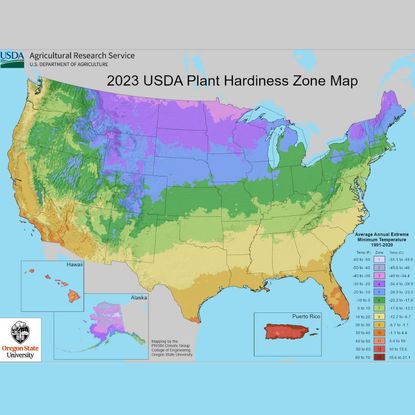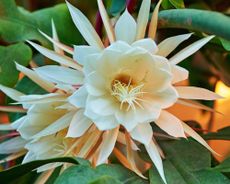USDA Planting Zones: What Is My Growing Zone?
Understanding planting zones is not complicated. Learn how to find your zone on handy USDA maps and plan your garden accordingly.

US Planting Zone Map – Growing Zones In The United States
Knowing your hardiness zone for plants is one of the most fundamental factors in gardening success. The zones tell you what you can plant as a perennial and which plants will only be annuals where you live. By understanding plant hardiness, the USDA zones, and where you fall on the map, you’ll be better able to select plants for your garden.
About Plant Hardiness
Hardiness refers to a plant’s ability to survive winter temperatures. If a plant is hardy (or cold hardy) where you live, you can plant it in the ground outside and expect it to come back year after year. In other words, it is a perennial.
If a plant is not hardy in your area, you can still grow it, but as an annual. If you leave it outdoors as the temperatures drop, it will die and not recover for the next growing season.
What Are US Hardiness Zones?
The U.S. Department of Agriculture (USDA) makes it easy for you to determine which plants are hardy in any given area. The USDA defined hardiness zones for North America and created a map in 1960 that outlines those zones. The map was updated in 1965, 1990, 2012, and most recently in 2023.
A hardiness zone is defined by its lowest average annual temperature. Each zone includes a ten degree range of average minimum temperatures. The coldest zone is 1 with average low temperatures between -50 and -60 degrees Fahrenheit (-45.6 and -51.1 Celsius). Zone 13, the warmest has average low temperatures of 60 to 70 degrees Fahrenheit (15.6 and 21.1 Celsius). Within each zone are two subzones, a and b.
What Planting Zone am I in?
You can use the USDA map to find which zone you garden in. The latest edition of the growing zone map has even more detail, making it easier to pinpoint your exact zone. You can use the map by simply looking at it and finding your location, or you can use the USDA’s zip code tool.
In some areas, the zone is clear and easy to identify. In others, regional or local variations mean you might see two or more zones close to where you live. The zip code search is handy for these areas.
Gardening tips, videos, info and more delivered right to your inbox!
Sign up for the Gardening Know How newsletter today and receive a free download of our most popular eBook "How to Grow Delicious Tomatoes."
Gardening for Your Zone
Identifying your USDA zone is just the first step in using the map as a tool for a successful garden. When selecting plants, check their zones. Plants are labeled as being hardy in a range of zones, for instance 5 through 9. Compare the plants zones to your zone to decide if you can grow it as a perennial.
If your zone is the same as or higher than a plant’s listed zones, it is hardy and will grow as a perennial in your garden. If your zone is lower than what is listed on a plant, it will not survive winter in your garden and can be grown as an annual.
You can also use the zones to identify plants that will not grow well in your garden because the climate is too warm. For example, if you live in zone 8 and find a plant hardy in zones 3 and 4, technically you can grow it, but it likely won’t thrive in the warm conditions.
Keep in mind that the USDA zones are defined for planting in the ground, not containers. Soil in the ground stays warmer than soil in containers in the winter, so the zones do not apply to potted plants.
Also, note that there is a little wiggle room in zones. If you are in zone 5 and choose a plant that is hardy through zone 6, your climate is officially too cold. On the other hand, it’s borderline and there could be local variations that allow it to grow well. Beds against the south side of the house or in an area protected from wind might be a little warmer than your official zone suggests.
The USDA zone map is an essential tool for all gardeners. Without it, it’s difficult to know which plants you can grow and how to grow them. With the map, you can select the best perennials and annuals for a successful garden.
What is My Hardiness Zone? Planting Zones by State
To find your zone, select your state or region in the list below to view a detailed hardiness zone map of your location.
Heat Zone Map Info – What Do Heat Zones Mean Anyway
USDA Zones In Canada: Are Canada Growing Zones Similar To U.S.
What Are Climate Zones – Gardening In Different Climate Types
-
 7 Best Dwarf Tomato Plants
7 Best Dwarf Tomato PlantsHave a tiny growing space? Look for dwarf tomato seeds so you don’t miss out on summer’s juicy bounty.
By Susan Albert
-
 5 Night-Blooming Houseplants – Grow An Indoor Moon Garden
5 Night-Blooming Houseplants – Grow An Indoor Moon GardenThere is something uniquely special about night-blooming houseplants. Set the scene for a magical evening indoors with these fragrant flowering beauties.
By Amy Grant